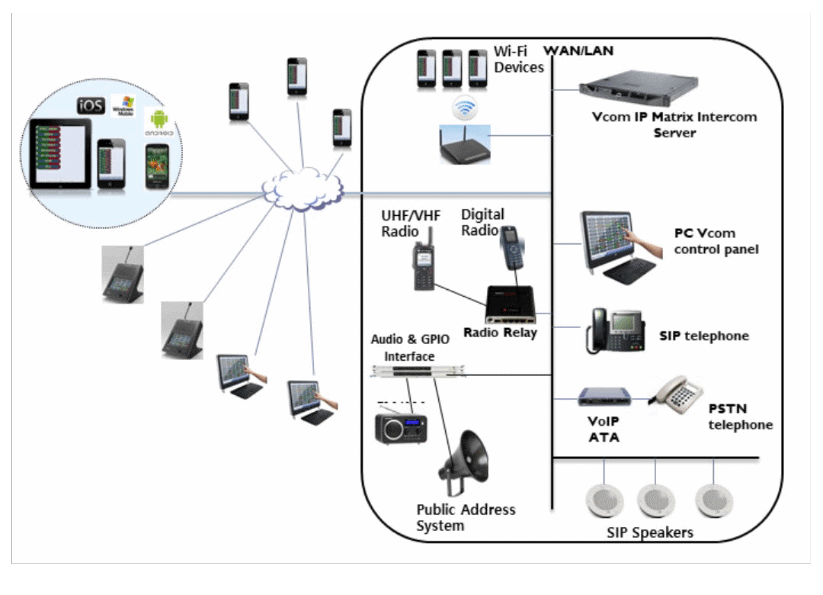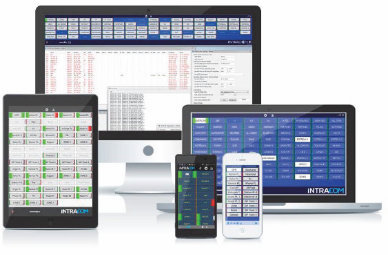The VCOM virtual matrix software solution provides the capability for any desktop computer with a headset to communicate with all your communication devices – wireless intercoms, (RADs, HME, Pliant, Tempest, and Telex), speaker stations, SIP speaker stations, analog phones, 2-way radios, etc. VCOM runs on standard computer and network hardware with a dedicated server.
All VCOM components run on Windows, Linux or Mac platforms. Both Audio and Control Signals are transported over IP. The VCOM system readily scales to hundreds of users, is built on a highly flexible platform which coincides with a broad movement within industry and government to use widely deployed IP infrastructures and commercially available computer hardware.

VCOM Wireless Intercom
Leverage the VCOM Control Panel for Mobile to add Handheld clients to an existing VCOM System or use as a stand-alone wireless intercom system – a powerful, highly interoperable substitute to proprietary, hardware-based wireless intercom systems and two-way radios.
- Supports as many as 200 users that can talk hands free privately or in full-duplex conference
- Works over WiFi and data cellular networks
- Use in push-to-talk or push-to-enable mode
- Freedom from radio-frequency constraints
- Offers virtually unlimited channels configurable for Point-to-points, group calls and party lines
- Web interfaces are available for the System Management and User Client applications
- Works with RMS Software to auto transmit integrated dose level
Audio Input Devices (AID)
Since VCOM is a native IP communication solution, analog wireless intercoms, 2-way radios, speaker stations (squawk boxes), etc. must be converted to IP through an AID. The AID usually mounts in the same rack as the network switch (for cameras) and accepts up to 16 analog devices. The Audio Input Devices (AID) are normally located on the refuel floor, drywell & other areas with deployed analog communications.
- Device Interface supports connection with 2-way radios, hardware-based communications systems or public/private telephone networks via standard hardware interfaces





